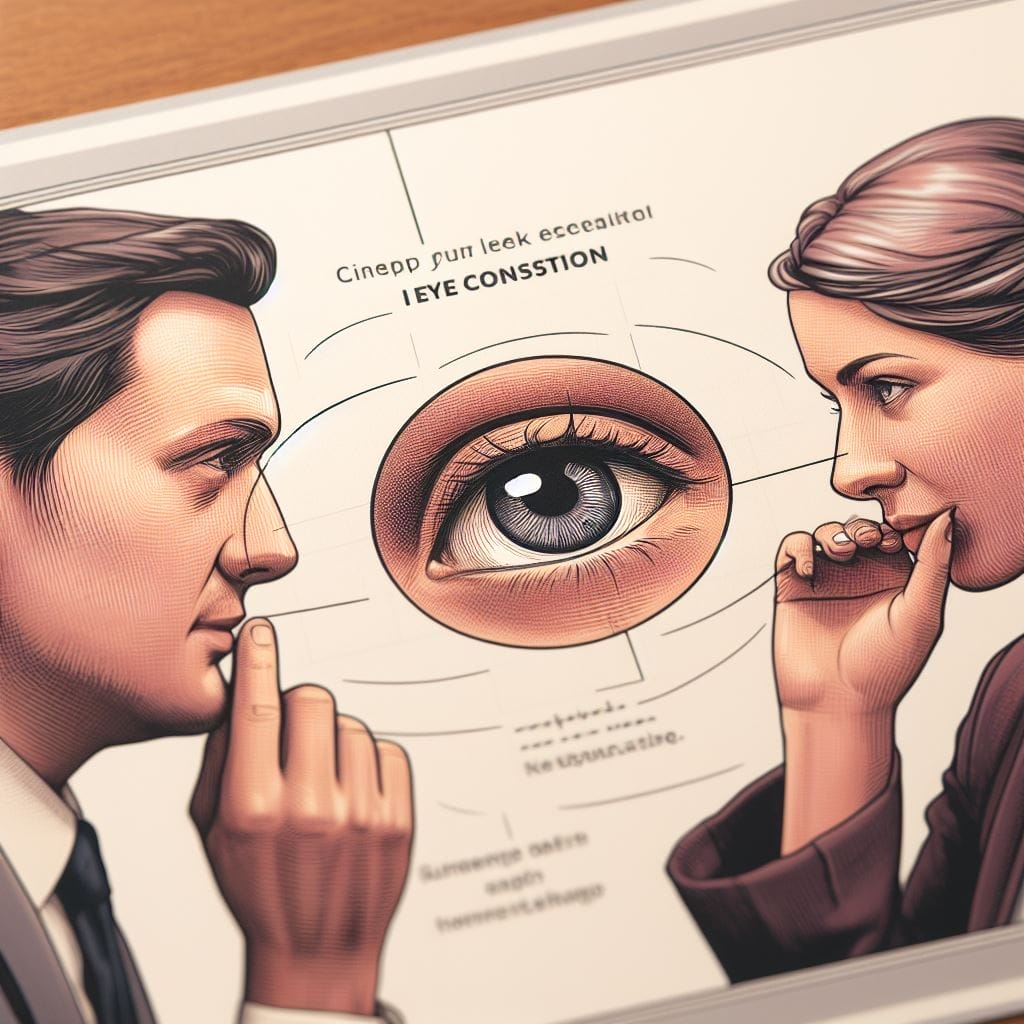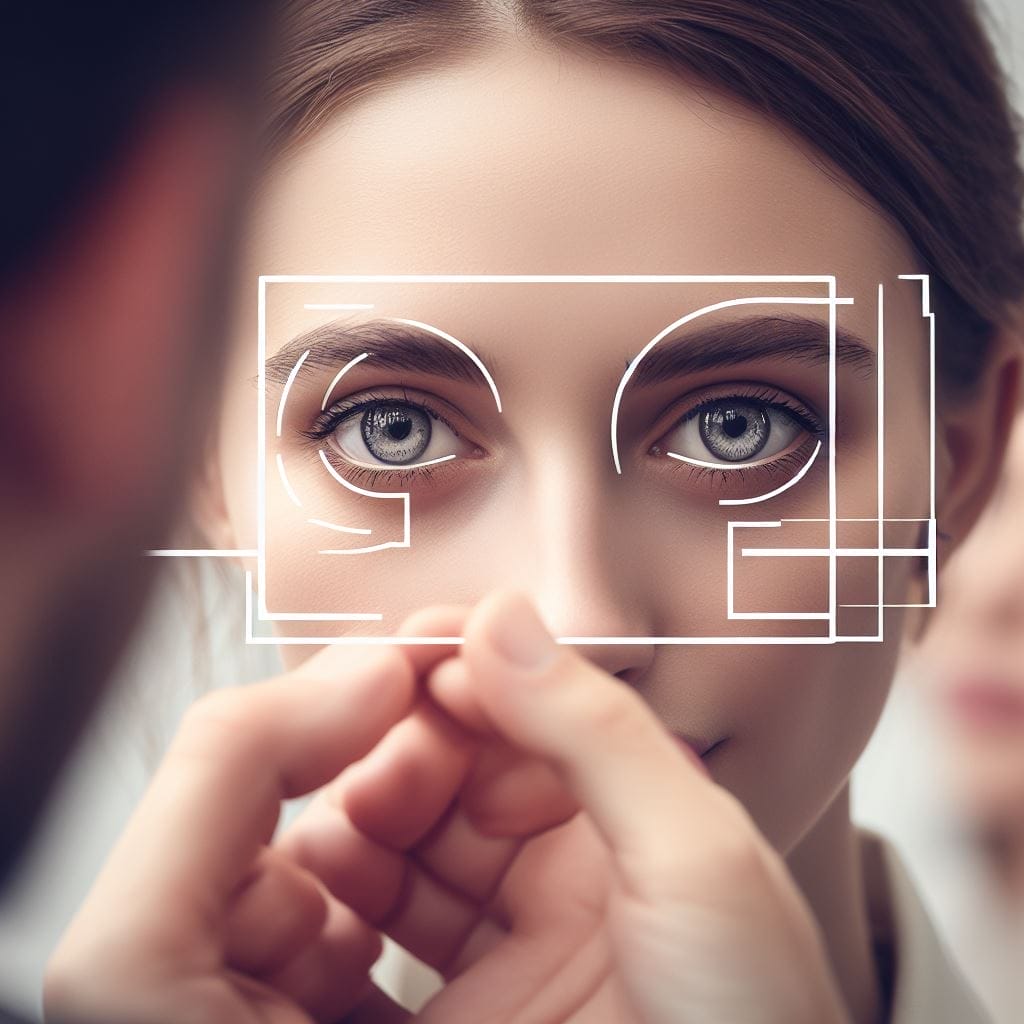Introduction
The art of energetic listening frequently takes a backseat in the daily chaos of our lives. Have you ever determined yourself nodding alongside a conversation, handiest to understand that your thoughts became miles away? It happens to the quality folks. Don’t worry, this adventure will assist you in enhancing your energetic listening talents. It’s important for communication. So today in this guide you will learn ‘ How Can I Improve My Active Listening Skills.
Before we embark on this transformative expedition, let’s grasp the essence of active listening. Listening isn’t just hearing words. It’s connecting with the speaker on a deep level. It’s understanding their tone, expressions, and body language. Improving your listening capabilities can improve your potential to talk nicely in all regions of your existence.
In this exploration, we can spoil down active listening and learn about empathy and emotional intelligence. We’ll also look at biases and assumptions and learn useful techniques for various situations. Get ready, buckle up, and join us on a journey to become active listeners who truly understand and connect with others. Let’s unravel the secrets to becoming a better listener together.
Remember, becoming a proficient active listener is a journey, not a destination. Now, let’s explore the powerful effect that active listening skills have on our lives.
Key Takeaways:
- Gain a profound understanding of active listening as the linchpin to effective communication.
- To understand body language, make eye contact, nod, and avoid distractions.
- Improve your people skills by understanding how others see and feel things.
- Discover ways to lessen biases, avoid judging, and handle personal biases to remain open-minded.
- Adjust how you listen to do well at work, interviews, arguments, and personal connections.
- Practice being present, listening, and thinking about past talks to find ways to improve.
- Stay focused and patient while listening. Use practical tips to overcome language barriers.
- Explore the advantages in professional areas like improved communication, understanding, relationships, trust, and efficiency.

Understanding the Components of Active Listening
Mastering active listening is crucial in the fast-paced world of communication. It can make a big difference. It goes beyond hearing words; it’s about understanding the nuances, emotions, and unsaid messages. Let’s explore the techniques that can improve your communication skills.
I. Attentive Body Language: Speaking Without Words
Communication is not about words; it’s about the unspoken. To practice active listening, start by learning about attentive body language.
A. Maintain Eye Contact
Maintaining eye contact is like the North Star of active listening. It grounds you in the conversation, signaling your undivided attention. When the speaker talks, show interest to connect with them because words alone can’t do that.
B. Nodding and Other Nonverbal Cues
Sometimes, a simple nod speaks volumes. When you nod or show a thoughtful expression, the speaker knows you’re engaged. These small signals create a connection, like a dance where every move is important.
C. Avoid Distractions
In the age of consistent connectivity, distractions lurk around every nook. To engage in active listening, silence the noise – both physical and digital. Turn off your phone, close unnecessary tabs, and let the speaker take center stage. The absence of distractions amplifies the power of your presence.
II. Verbal Signals: The Symphony of Conversation
Verbal signals are the notes in the symphony of active listening, adding melody and harmony to the discourse.
A. Asking Relevant Questions
Questions are the compass guiding the conversation. Asking thoughtful questions shows your interest and helps the conversation go deeper. Embrace the art of asking, paving the way for a more profound exchange of ideas.
B. Paraphrasing to Confirm Understanding
Paraphrasing is the echo of active listening. It reflects your effort to grasp the essence of what’s being communicated. By putting the speaker’s words in your own, you confirm understanding and bridge potential gaps in interpretation.
C. Offering Suggestions and Motivation
Words can inspire and encourage. Providing constructive feedback and encouragement not simplest acknowledges the speaker’s efforts but also fuels superb and open talk. It’s the fuel that continues the conversational engine jogging easily.
III. The Active Listening Skills Table
| Aspect | Description |
|---|---|
| 1. Eye Contact | Maintain consistent, friendly eye contact to convey attentiveness. |
| 2. Posture | Adopt an open and receptive posture to signal your willingness to listen. |
| 3. Nodding | Use occasional nodding to show agreement and understanding. Avoid excessive nodding, which may seem disingenuous. |
| 4. Verbal Affirmations | Employ short affirmations like “I see,” “I understand,” or “Go on” to encourage the speaker. |
| 5. Minimal Encouragers | Insert brief verbal cues such as “Hmm,” “Yes,” or “Tell me more” to indicate active engagement. |
| 6. Paraphrasing | Summarize what you’ve heard in your own words to confirm understanding and convey empathy. |
| 7. Reflection | Reflect on the speaker’s emotions by expressing understanding of their feelings. |
| 8. Avoid Interrupting | Let the speaker finish before responding, demonstrating respect for their perspective. |
| 9. Ask Open-Ended Questions | Encourage deeper conversation by asking questions that prompt thoughtful responses. |
| 10. Empathy | Put yourself in the speaker’s shoes and respond with genuine understanding and care. |
| 11. Remove Distractions | Minimize external distractions to focus entirely on the speaker’s words. |
| 12. Avoid Judgment | Suspend judgment and refrain from forming opinions until the speaker has fully expressed themselves. |
| 13. Mindful Silence | Embrace brief moments of silence to allow the speaker to collect their thoughts and share more openly. |
| 14. Note-Taking | Jot down key points to enhance memory and demonstrate active involvement in the conversation. |
| 15. Clarification | Seek clarification on ambiguous points to ensure accurate understanding. |
| 16. Cultural Sensitivity | Be aware of cultural nuances in communication styles and adapt your approach accordingly. |
| 17. Continuous Learning | Regularly reflect on your listening skills, seeking opportunities for improvement and growth. |
Building Emotional Intelligence and Empathy
Beyond the technicalities, lively listening is ready forging true connections, rooted in empathy and emotional intelligence.
A. Imagining That You Are the Speaker
Empathy is the cornerstone of lively listening. Put yourself within the speaker’s area, see things from their component of view, and apprehend how they sense. It’s an adventure that is going beyond words, growing shared information that is going past speaking.
B. Identifying and Embracing Feelings
Emotions are the colors that paint the canvas of communique. Recognize and acknowledge those emotions. When we talk about our emotions, whether they may be satisfied, indignant, or unsure, it creates an atmosphere in which we can be true to ourselves.
C. Reacting with compassion and empathy
In your responses, permit empathy and compassion to be your guiding stars. Speak now not with words however with the warmth of knowledge.
Minimizing Biases and Assumptions
Steer clear of preconceived notions
When carrying out conversations, it’s crucial to approach them with open thoughts. Avoid preconceived notions that would restrict your understanding of the speaker’s attitude. By postponing judgment, you create an area for true connection.
Suspending Judgment
Suspending judgment doesn’t mean leaving behind your critical wondering talents. It gives others the advantage of the doubt and refraining from forming opinions. This fosters an surroundings where thoughts can glide.
Understanding Personal Predispositions and Handling Them
Acknowledging your biases is the first step towards handling them. When you have conversations, try to position apart your preconceived thoughts and biases. Grasping the nuances of what’s being stated is superior to using this self-awareness.
Active Listening in Different Settings
Professional Settings
Effective Active Listening in Meetings and Presentations
In expert settings, getting to know the art of lively listening is a game-changer. During meetings and displays, use the active listening approach to expose which you’re engaged. Ask questions that prove your know-how and make clear factors that may be ambiguous.
Active Listening During Job Interviews
During job interviews, you need to understand nonverbal cues in addition to spoken words. Practice energy and being attentive to apprehend the interviewer’s expectations better. Summarize key points to exhibit your comprehension and improve your probability of landing that dream job.
Using Active Listening in Conflict and Negotiations
Negotiations and conflicts often have to have a delicate balance of assertiveness and empathy. Use active listening to navigate these situations. To understand others and express yourself, pay attention to their words and body language.
Personal Relationships
Active Listening in Friendships and Family Interactions
In private relationships, the benefits of energetic listening are immeasurable. Improve your listening talents by being an attentive listener. Ask open-ended questions to have meaningful conversations and enhance bonds with cherished ones.
Enhancing Romantic Relationships by Paying Attention
Romantic relationships thrive on powerful verbal exchange. Practice energy and paying attention to recognize your partner’s mind and emotions. Show that you’re listening by summarizing what they’ve shared, fostering a deeper connection.
Using Active Listening to Help People Through Tough Times
In times of issue, active listening becomes a powerful device for help. Concentrate on pals or your family members who are going through hard times. Show empathy and pay attention without interrupting or judging their feelings.

Practicing Active Listening
The Basis: Being Aware and Being in the Now
To grasp the essence of energetic listening, one has to start with mindfulness – the artwork of being present inside the second. As someone says, “Active listening is like tuning right into a communique radio station.” It requires your complete attention, mentally, to recognize what’s being stated.
“The way to enhance your listening abilities is through giving undivided interest to the opposite character.”
So, how do you reap this aware nation? Here are a few sensible steps:
- Make Eye Contact: Face the speaker, retaining eye touch to sign your attentiveness.
- To pay attention properly, and cut distractions in an international complete of things competing for attention.
Looking for Chances to Practice Active Listening
Active listening isn’t a passive try; it’s about collaborating in the dialogue. To end up proficient, search for ways to immerse yourself in conversations. When someone is talking, try repeating their words, a simple yet effective technique.
“Learning active listening techniques involves engaging in conversations.”
- Encourage elaboration by asking the speaker to share more thoughts and opinions.
- Ask clarifying questions to make sure you understand what the speaker meant.
Overcoming Challenges in Active Listening
Handling Outside Factors and Distractions
In our tech-savvy world, outside distractions abound, making active listening hard. But, it’s crucial to navigate these obstacles.
“Active listening requires attention to the other person, amidst external disturbances.”
- Focus on the speaker and redirect your attention back to the conversation.
- Enhance your listening skills by using techniques recommended by the Harvard Business Review.
Managing Impatience and the Urge to Interrupt
The urge to interrupt is a common barrier to effective listening. Overcoming impatience is key to mastering this skill.
“Active listening helps you become a better communicator, avoiding premature judgments.”
- Listen without interrupting. Don’t experience the want to interject. Give the speaker space to express their thoughts.
- Repeat the speaker’s phrases to reveal you’re listening and to avoid misunderstandings.
Resolving Communication Issues and Linguistic Barriers
Navigating language obstacles and verbally exchanging demanding situations is a vital part of energetic listening. It calls for adaptability and staying power.
“In certain points, active listening means adapting to different communication styles.”
- Face the Speaker: face the speaker, emphasizing your commitment to understanding them.
- Encourage Expression: Encourage the speaker to explicit themselves, even supposing language obstacles exist.
Advantages of Enhanced Active Listening Capabilities
Communication is essential to achieve our busy lives. Amid the chaos, it’s far more important to work out active listening. This permits us to recognize every other better, builds belief, and improves productiveness. Let’s delve into the myriad blessings of learning this art.
I. Enhanced Communication and Understanding
Active listening, frequently regarded as a skill, serves as the linchpin for effective verbal exchange. It goes past hearing words; it includes immersing oneself in what the character is pronouncing. This isn’t a passive act; it’s an artful engagement with the speaker’s mind and emotions.
Active Listening Advice
- Experience true freedom by opening your mind to understand and embrace the message.
- Help the speaker proportion greater by way of asking them to explain their mind in more detail. Saying something like, “Can you intricate on that?” opens doors to richer verbal exchange.
- Maintain eye touch to show you’re devoted to the verbal exchange. Non-verbal cues are crucial. It’s a silent affirmation that you’re tuned in and ready
II. Strengthened Relationships and Trust
In the area of interpersonal abilities, lively listening emerges as a powerhouse. When you invest your attention in what the opposite man or woman is announcing, you forge a connection constructed on acceptance as true. This connection forms the bedrock of robust and enduring relationships.
Methods for Getting Better
- Cultivate Empathy: Step into the speaker’s shoes, grasping now not only the phrases but also the emotions woven into their narrative. This empathy paperwork is a bridge, fostering a deeper expertise.
- Ask Clarifying Questions: Instead of assuming, search for an explanation. This no longer simply demonstrates your dedication but also ensures that there’s shared knowledge.
- Avoid Criticism: Resist the urge to criticize or choose. Criticism can act as a barrier, hindering open communique.
III. Increased Productivity and Efficiency in Professional Settings
Active listening has a big impact at work. It makes people more productive and efficient. Leaders who are skilled at this create an environment where ideas flow and collaboration thrives.
Techniques You Can Use
- Focus on Main Points: In a world inundated with information, discern the core messages. Pay attention to what matters, aligning your efforts with the key takeaways.
- Say Something Like “Yes”: Express agreement or acknowledgment during the conversation. A simple “yes” can be a powerful signal, encouraging the speaker to continue.
- Return to the Speaker: loop back to the speaker, summarizing what you’ve understood. This not only reinforces your engagement but also corrects any misinterpretations.
My Journey with Active Listening
Active listening has been a recurring theme in my personal and professional growth. Developing this skill helps me connect with the world and understand it better.
The Transformative Power of a Silent Concert
In a pivotal professional setting, I found myself immersed in a high-stakes negotiation. Tensions were high, and words felt delicate, like glass about to break. Rather than arguing, I chose to listen without saying anything.
Maintaining eye contact became the overture, setting the stage for genuine connection. I nodded and gave subtle cues to show I was engaged without saying anything. During the discussion, I asked important questions that went beyond the basics.
The climax arrived when, in a moment of tension, I chose to paraphrase the concerns raised. It was as if I played a note that resonated with the deepest chords of understanding. The atmosphere shifted. What could have been a discordant debate transformed into a collaborative symphony?
The Echo of Improved Relationships
Beyond the boardroom, the echoes of active listening reverberate in my relationships. The family gathering became a place to practice noticing body language. This helped everyone feel closer. Responding with empathy and compassion in a moment of vulnerability strengthened the bonds.
I learned that in romantic relationships, active listening speaks louder than grand gestures. It was in those quiet moments of hearing and understanding that the connection deepened.
A Note to the Future
To connect and understand others in my life, I found that active listening was crucial. It’s a skill that has improved my communication and helped me build relationships, both and.
As I continue my journey, I carry with me the resonance of improved active listening skills. It’s not a tool. It’s a way of being in the global. It’s a dedication to understanding, connecting, and harmonizing in existence’s grand symphony.
Come with me on a journey of listening. Hear and understand the world’s stories.

FAQs: How Can I Improve My Active Listening Skills?
How can you improve your active listening competencies? Do non-verbal cues, like eye touch, help?
To enhance your listening abilities, recognize listening with both your frame and mind. Maintaining eye contact and different non-verbal cues show that you are listening.
You can apprehend a person better by listening to their voice and facial expressions. When you discover ways to pay attention, it improves your communique and interpersonal skills.
Can you give me some questions about improving my listening skills? Can you give me tips for active listening? For example, how to paraphrase and summarize what the speaker says?
Many questions about improving listening skills focus on practical tips for active listening. To improve this skill, you can listen to the speaker and ask them to explain more.
People who listen well often repeat and summarize what the speaker says to show their understanding. This method helps guide the conversation and improves communication, making you a better listener.
Why is asking relevant questions during a conversation important? It allows you to stay focused and enhance your listening abilities. What are the blessings of the use of this approach?
During a conversation, it’s important to ask relevant questions. This helps us stay focused and become better listeners. When you listen and respond to someone, you show that you are a good listener. This also helps leaders and colleagues feel heard and understood.
This approach has many benefits. It helps create a good environment, improves communication, and encourages meaningful conversations.
Why is it important to face the speaker and use cues when developing listening skills? Can you give tips on how to respond and summarize in a conversation?
Facing the speaker and the usage of cues are essential when growing listening abilities. To be a powerful listener, maintain eye contact and pay attention to the speaker’s tone and facial expressions. When you reply to someone, use “after” or summarize what they said to show you’re listening and guide the conversation.
When we make a conscious effort to keep away from criticizing the speaker, we will enhance verbal exchange. Instead, we have to encourage them to express themselves. This will enhance the great of communique.
What are some non-verbal aspects of active listening that people often forget? How can you listen without distractions and still show non-verbal cues for communication?
Non-verbal factors of lively listening that are from time to time unnoticed include the significance of keeping an eye touch and listening without distractions. While looking to consciousness on what a person is saying, it’s critical to show non-verbal cues that state you are listening.
This consists of taking note of the speaker’s facial expressions and tone of voice. Striking the right stability—listening without distractions even besides showing that you are engaged—contributes to powerful conversation and being perceived as an attentive and empathetic listener.
Conclusion: How Can I Improve My Active Listening Skills?
Active listening is an important part of communication. It helps create understanding and empathy. We must learn how to connect with others, as must our lives. Let’s unravel the essence of our journey through the art of active listening:
- We create a harmony that goes beyond words by using body language and verbal signals. True understanding is like a song, created by eye contact, nods, and genuine questions.
- The soul of active listening lies in empathy and emotional intelligence. When we imagine ourselves in someone else’s position and understand their feelings, we can respond with kindness. This helps us form a strong bond with others.
- By getting rid of biases and assumptions, we remove the things that make communication unclear. To let the real message come out, we need to avoid judging and controlling our biases.
- Active listening is valuable in both professional and personal settings because it can be adapted. Our skills are valuable in many situations, like meetings, family events, and supporting friends. They make interactions better.
- Mindfulness becomes our tuning fork, keeping us in the present moment. To get better, look for chances to practice and think about past talks.
- Challenges can disrupt the rhythm. They include distractions, impatience, and language barriers. Yet, we overcome these challenges and keep the art of listening intact.
In the crescendo of improved active listening skills, the benefits reverberate:
- Enhanced Communication: A clear and resonant exchange of ideas fosters understanding.
- Strengthened Relationships: Trust and connection flourish in the soil of attentive listening.
- Elevated Productivity: Professional settings witness a surge in efficiency as active listening becomes a cornerstone.
Embrace the Symphony of Listening
As we conclude this harmonious exploration, let the call to action be a crescendo in itself. Embrace the symphony of listening in your daily interactions. Practice the art. Refine the notes. See the world transform into a richer, melodious tapestry of understanding.
Dive into the dialogue, dance with the nuances, and let active listening be your guiding rhythm. The stage is set for you to become the virtuoso of connection. Are you ready to take the spotlight?
The curtain rises; it’s time to listen.

Sarah Andrews’ work on relationships is informed by a breadth of experience and a strong interest in human nature. Sarah, who holds a Psychology degree and has a good eye for nuances, delves into the complexity of communication and emotion, delivering insightful insights for readers seeking personal growth and emotional pleasure. Sarah hopes that her empathic approach and insightful suggestions will motivate readers to understand themselves and their relationships better.
